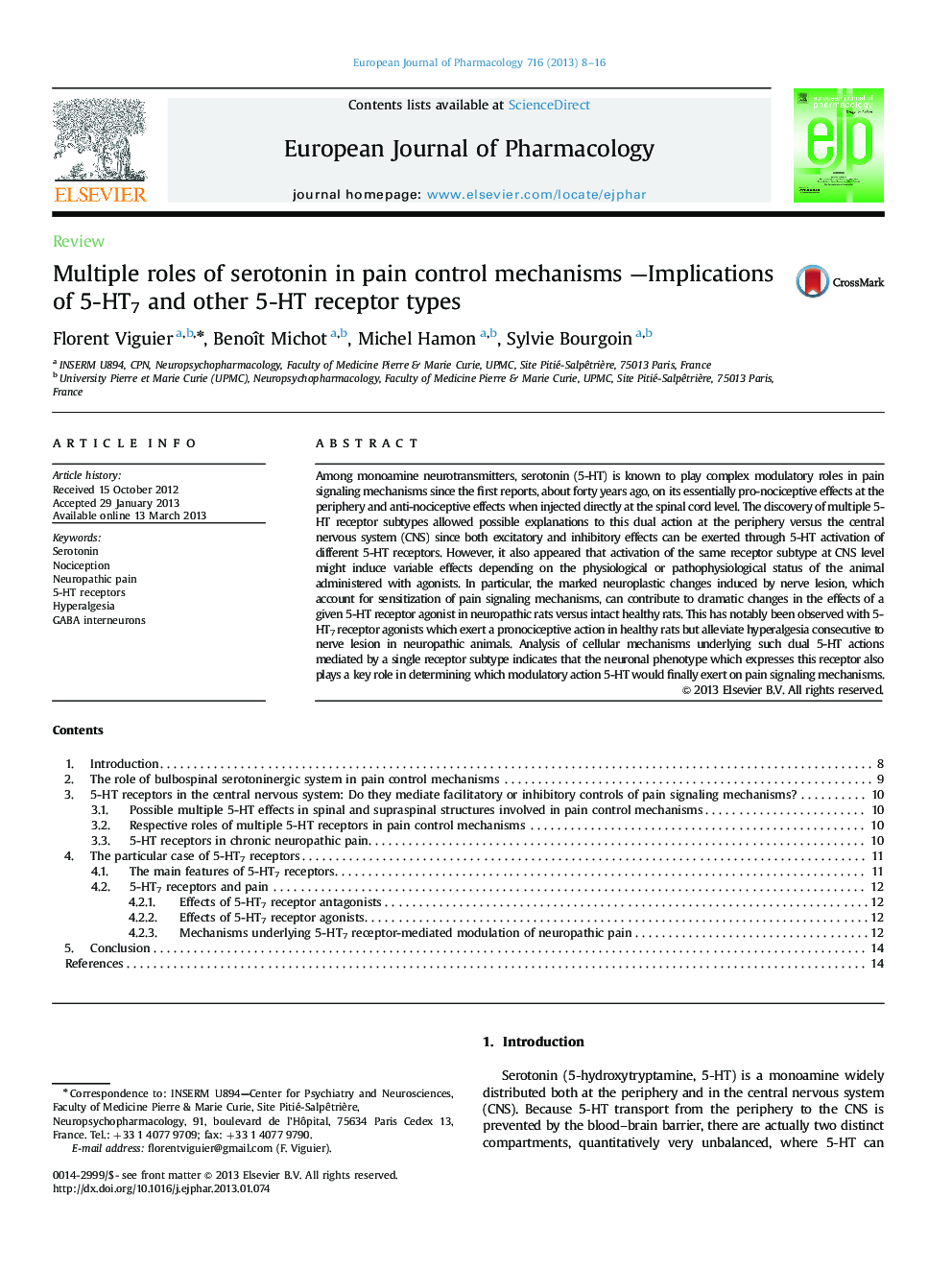| Article ID | Journal | Published Year | Pages | File Type |
|---|---|---|---|---|
| 5828256 | European Journal of Pharmacology | 2013 | 9 Pages |
Among monoamine neurotransmitters, serotonin (5-HT) is known to play complex modulatory roles in pain signaling mechanisms since the first reports, about forty years ago, on its essentially pro-nociceptive effects at the periphery and anti-nociceptive effects when injected directly at the spinal cord level. The discovery of multiple 5-HT receptor subtypes allowed possible explanations to this dual action at the periphery versus the central nervous system (CNS) since both excitatory and inhibitory effects can be exerted through 5-HT activation of different 5-HT receptors. However, it also appeared that activation of the same receptor subtype at CNS level might induce variable effects depending on the physiological or pathophysiological status of the animal administered with agonists. In particular, the marked neuroplastic changes induced by nerve lesion, which account for sensitization of pain signaling mechanisms, can contribute to dramatic changes in the effects of a given 5-HT receptor agonist in neuropathic rats versus intact healthy rats. This has notably been observed with 5-HT7 receptor agonists which exert a pronociceptive action in healthy rats but alleviate hyperalgesia consecutive to nerve lesion in neuropathic animals. Analysis of cellular mechanisms underlying such dual 5-HT actions mediated by a single receptor subtype indicates that the neuronal phenotype which expresses this receptor also plays a key role in determining which modulatory action 5-HT would finally exert on pain signaling mechanisms.
